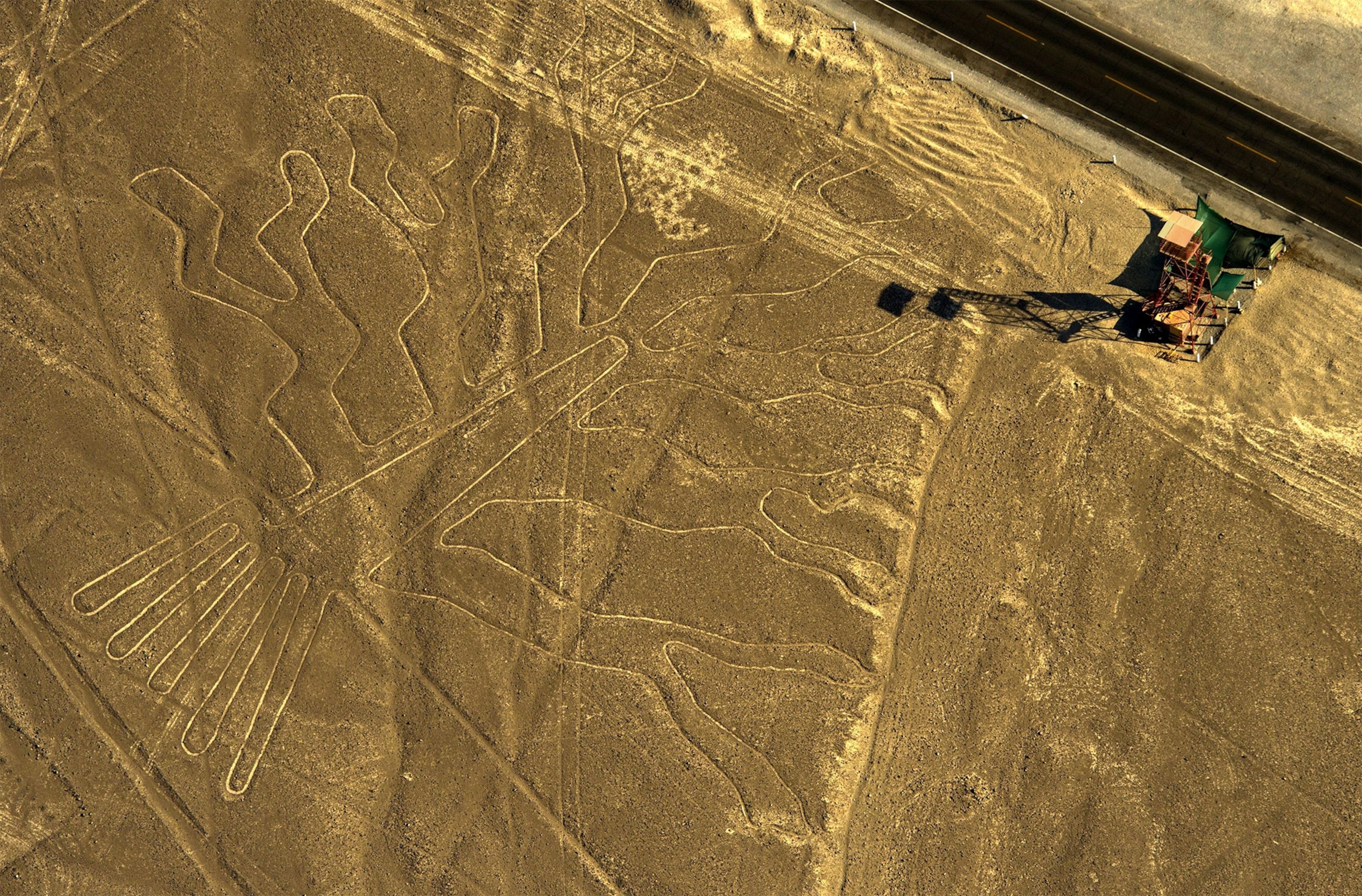
Trucker Drives Over Mysterious Ancient Monuments
It’s not the first time Peru's fragile Nasca lines—an important UNESCO site—have been threatened.
Forty-year-old Peruvian truck driver Jainer Jesús Flores Vigo was arrested on Monday. This might have gone unremarked if Flores hadn’t been charged with an “attack against cultural heritage” for steering his 18-wheeler over 160 feet of the famed Nasca lines, causing significant damage to the UNESCO World Heritage site.
Flores claims mechanical issues forced him to ignore posted signs and veer off from the Pan-American Highway, a 19,000-mile-long roadway stretching from Chile to the southern U.S, on Saturday night. While one Argentine newspaper suggested Flores might have driven off the road to avoid paying a toll, a Peruvian judge decided there was insufficient evidence to suggest his actions were deliberate.
Currently released in a state of limited freedoms, Flores will likely appear before a Ministry of Culture-organized hearing within days. But Public Ministry attorneys have reinforced their intent to seek a sentence of nine months of preventive incarceration and a fine of $1,550 (5,000 Peruvian soles), which is about three-and-a-half times the average monthly salary in Peru.
LINES IN THE SAND
Around A.D. 1 to 700, the Nasca people crafted over a thousand of these geoglyphs by removing the oxidized upper layer of rock to reveal the paler earth a foot below. In a desert so dry there’s less than an inch of rain a year, the varnish of these miles-long lines, geometric shapes, and zoomorphic figures—some as large as the Empire State Building—has remained unchanged for nearly 2,000 years. [Read more about the Nasca lines in National Geographic magazine.]
It was only with the advent of commercial flight in the 1930s that scholarly attention was directed to the Nasca lines: their full shapes only become apparent from the air. In years since, a number of theories have suggested their origins are due to anything from an astronomical calendar, to a marketplace, to monuments associated with water rituals. [Why do some people think these sites were built by aliens?]
Regardless of their original purpose, the Nasca lines are of paramount importance to Peru’s cultural patrimony, and they are visited by tens of thousands of tourists a year. But it’s not the first time they’ve been damaged.
DISTURBING THE PEACE
In 2014, members of the environmental group Greenpeace left footprints over the area while arranging a publicity stunt calling for renewable energy during a major climate conference. The event drew international attention; the group apologized, but their mark may last for hundreds of years in this fragile environment.
- National Geographic Expeditions
But damage such as Flores’s “happens daily,” Johny Isla, an archaeologist and director of the Nasca-Palpa Project, said in conversation on Peruvian radio. He described people who discard trash on the side of the road near the lines, or film themselves trespassing on the lines to upload the images to social media.
Noting that the Ministry of Culture already monitors more prominent areas on a daily basis, Isla also suggested increasing surveillance of the entire site, including through use of drones, according to Peru's state-run Andina news organization.
Mudslides, such as those exacerbated by climate change-related flooding, as well as intrusive tourism practices also threaten the site.
“[The Nasca lines transformed] the vast land into a highly symbolic, ritual and social cultural landscape that remains until today,” the official UNESCO listing observes. “They are the most outstanding group of geoglyphs anywhere in the world.”




